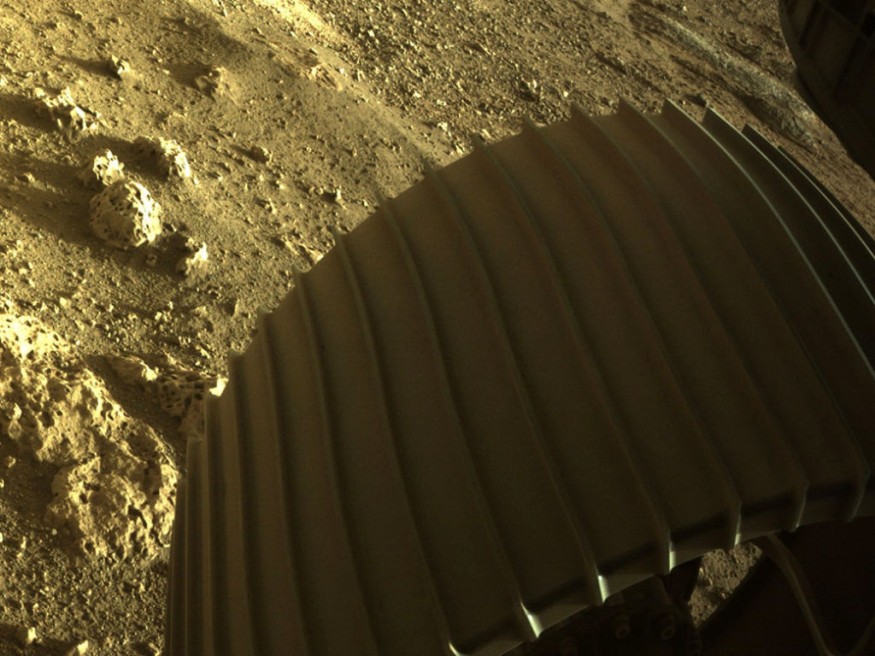Once believed to be a "barren rocky planet," recent study findings like an image of a gigantic rock and multiple rocky residues looking like a place on Earth at Jezero crater reveal evidence that a river used to pass through an area on Mars.
A WMFE report said, according to the University of Florida astrobiologist Dr. Amy Williams, perhaps, Earth is not entirely different from other planets at all.
She added that this "gorgeous little mound of rocks" has the most attractive patterns in it. She also said it tells about the history of water flow in the Jezero Crater on the Red Planet.
Fortunately, because of the Perseverance Rover of NASA, scientists can now see this rock from the planet's surface, for the first time, a glimpse of an ancient river's rocky remnants that flowed billions of years ago on Mars. The said NASA rover touched down in Jezero crater, described in the space agency's website, as an olden riverbed that once flowed with water.
ALSO READ : NASA's Perseverance Rover Images Reveal That Jezero Crater in Mars Was an Ancient Lake 3.7 Billion Years Ago

Water Flowing in Jezero Crater
Scientists believe such a formation at Kodiak is a residue, the leftover stuff as the prehistoric delta at Jezero crater worn away.
It could have been a great site to have a nice small lake and could have been a pleasant environment except that people need to breathe oxygen. The good thing about the Perseverance rover, detailed on the NASA site, is that it does not require oxygen.
Williams explained that one could nearly picture an earth-like environment where these kinds of dynamic processes occur. However, it was on the Red Planet in the distant past.
Results from the rover present that there was not only a river flowing, but there was also flooding. The astrobiologist added the history of water flowing in the Jezero crater could be understood. "It actually told us a bit" about the occurrences of floods that have taken place in the crater, as well, she continued.
Flooding That Brought Down Huge Boulders
Williams explained she expected to see layers consistent with a delta like what they observed in Kodiak, although they did not expect to witness boulders.
One idea about how they got there is that there could have been flooding occurrences that brought down such huge boulders.
Such an existence of these boulders provides scientists with hits about the climate on the Red Planet, the flow of water, and how fat it might have been.
Prior to Perseverance, the team of Williams depended on orbital images. These are photos of the surface captured from high atop the planet.
The Power of Geology
However, with a rover on the ground, the team spotted boulders. Further evidence there was formerly a dynamic river that flowed and flooded through the period of ancient Martian history.
The results bring scientists a step nearer, getting a sense of what some places outside Earth used to look like. Williams described it as "the power of geology."
As an astrobiologist explained, Williams is not just looking into exploring the history of rivers on Mars; she's looking for indications, too, of tiny microorganisms from animals and plants.
Since ancient Mars had liquid waters, scientists claimed there is a good chance it could contain past life, as well.
Sediments Deposited in Lake Beds
According to Williams, one of the environments astrobiologists want to preserve such types of biosignatures, or evidence for life is in extremely fine-grained sediments deposited in lake beds.
She elaborated, "when we see how this delta has flowed into the lake," the manner the sentiments have deposited, that tells about where such tiny grains, sediments are going to be deposited, as well.
Perseverance comprises the tools to help astrobiologists determine the Red Planet's best specimens and choose the best ones to return to Earth.
NASA plans to send another rover to the surface and gather these samples, then have them launched back to Earth for scientists to investigate closer.
Report about the Perseverance rover's recent capture is shown on Mister Daniele's YouTube video below:
RELATED ARTICLE : Mars Had Thousands of Massive Volcanic Eruptions That Changed Its Climate 4 Billion Years Ago, NASA Reveals
Check out more news and information on Mars in Science Times.









